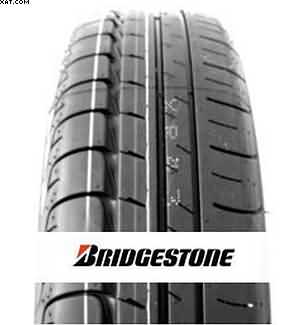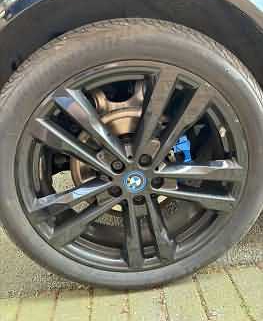Narrow Tyres BMW i3
Narrow Tyres BMW i3

Narrow Tyres BMW i3
We take a closer look at Bridgestone’s Ecopia EP500 tyres for the 2015 BMW i3 electric car.
This article asks how the new BMW i3 car can handle such narrow-tread Bridgestone tyres?
Well, it was not too long ago that all tyres were thin and narrow, do you know? They worked perfectly well.
The difference is that today’s tyres are made from different materials and compounds. Ecopia tyres help you cut down on fuel consumption and carbon emissions and are used on fuel-efficient electric cars such as the BMW i3.
Tyre sizes are unfamiliar out of the tyre trade
such as 15570R19, 17660R19, and also as large as 15560R20 and 17555R20. In days gone by, we were using sizes such as 18580R15 and 20580R16, so the trend has become taller Narrow Tyres , but Bridgestone says that these tyres are good handling and give good grip in wet weather.
So that is good enough for me.
http://www.pellontyres.co.uk/Tyre/Details/Bridgestone/Ecopia+EP500
Bridgestone narrow tyres: Narrow Tyres BMW i3
The development of tyres started with the vintage and classic cars of today. We have all seen how narrow the tyres were on these cars. These cars could not go very fast, though? And the tyres were perfect for the time period and the types of suspension that these cars had.
The vintage cars of today could only be afforded by the rich
in the pre-World War II period, but after the war, cars became more affordable to the drivers, who were perhaps managers or owners of small businesses. I can remember when I first started working in a garage that most of our customers did indeed own a business, and the working-class people would still catch the bus to work.
The cars that were out then were fitted
Let’s have a look at the Michelin Pilot Sport EV tyre
So, a recent marvel in the tyre business designed specifically for electric vehicles (EVs). Consider this: you’re driving down the M62, the classic Pennines rolling by, and your EV purring like a happy kitten. But what makes this ride so smooth and quiet? The Pilot Sport EV tyre is the latest innovation from Michelin.
Let’s start with what makes these tyres so revolutionary for EV drivers.
We’re all aware that electric vehicles differ from traditional petrol and diesel cars in several ways. For starters, they’re heavier due to those bulky lithium batteries. The Michelin Pilot Sport EV comes into play here. It’s built to manage the added weight with ease, providing excellent handling and longevity. This means you can zoom around the Yorkshire countryside as easily as you can navigate the hectic streets of Leeds.
Let’s talk about the comfort and noise level now, shall we?
EVs are naturally quieter than standard vehicles, and the last thing you want is for tyres to interrupt that tranquil atmosphere. Michelin has effectively addressed this by lowering tyre noise, ensuring that your tranquil drives through Halifax’s gorgeous roadways stay just that – calm. It’s like gliding through the air, but without the noise!
But here’s the actual deal: efficiency.
The Michelin Pilot Sport EV tyre is designed to get the most out of your EV’s battery while providing a pleasant ride. These tyres are designed to reduce rolling resistance, which means your car will work less hard and you will get more miles out of each charge. That’s significant, especially if you’re travelling from Halifax to London and want to make the most of your battery.
Now for something with a Yorkshire twist.
Consider driving your EV equipped with these tyres through Bronte country, along the winding roads of Haworth. Not only will you be helping the environment, but you will also be enjoying a quality driving experience while taking in our region’s rich history and gorgeous surroundings.
To summarise, the Michelin Pilot Sport EV tyre is more than simply a piece of rubber
it demonstrates Michelin’s dedication to innovation, particularly in the fast expanding world of EVs. It’s about having fun driving through our lovely Yorkshire countryside or through the hectic streets of our towns, knowing your EV is outfitted with tyres that improve performance, efficiency, and comfort. So, whether you’re an EV aficionado or just thinking about making the transition, these tyres are well worth a look. Happy driving, everyone! 🚗💨
with X ply tyres, but thanks to Michelin the radial tyre came out and soon took over from the lesser X-ply tyres. The bigger cars came out with 18580R15 tyres, and cars like the new Minis were fitted with 145R10 tyres.
In fact, the Mini period signalled a new kind of car buyer: the working-class man. The car market was booming. Tyre sizes were changing all the time, with the commonest radial tyre being the 145R13, 155R13, and the bigger cars being fitted with the 155R15, 165R15, and 185R15.
Over the years, they became wider (fatter), this was due to many factors including faster cars on faster roads.
Why narrow tyres again: Narrow Tyres BMW i3
Consequently, car manufacturers knew that tyres had to be made differently. Therefore, to satisfy the requirements’ of the governments drive to produce greener cars. The EV battery driven vehicle became a favourite. For this reason, it followed closely by the Hydrogen cell cars.
Some tyre companies use different tyre materials: Narrow Tyres BMW i3
to reduce the amount of petrol based oils used in the manufacturing compounds. Yokohama tyres of Japan use orange peel oil and Continental have discovered that the white liquid that we see in dandelions has the same molecular structure as rubber latex, the stuff that they have been made of for years.
They are also becoming thinner again. Narrow Tyres BMW i3
This is to give the tyres less rolling resistance and also a larger turning distance. This means that the engine has to do less work to power the car forward, thus using less fuel and making the car greener. We are now up to date with Bridgestone Car Tyres leading the way.
Pellon Tyre and Auto-centre offer car and van servicing and repairs to all makes of vehicles.



